
Heifer selection strategies: Does she stay or does she go?
January 2025
Researcher
Dr. Susan Markus, livestock research scientist, Lakeland College
Summary
Dr. Susan Markus at Lakeland College Applied Research, along with her research team, investigated the use of genomics with phenotypes to better predict the success (longevity) of replacement beef heifers in the cow herd- especially past their second calving. The objective of this project was to identify which variables are associated with greater reproductive performance (higher number of pregnancies) so replacement heifer selection can be done at an earlier age/stage in the production cycle.
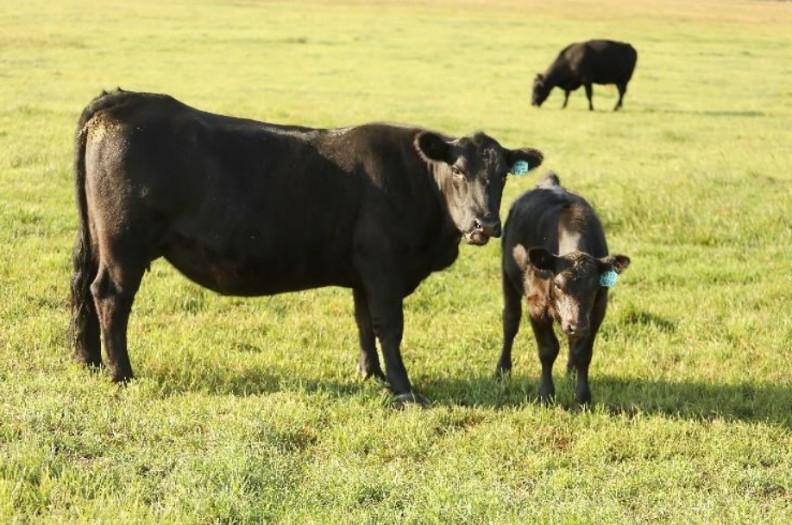
Background
Fertility is the number one trait linked to profitability for cow-calf herds. It’s also of low heritability and sometimes difficult to assess depending on your record-keeping system. Typically, it includes age at first calving, pregnancy rate, calving interval and longevity or stayability. Unlike the feedlot sector that relies on highly heritable growth traits, cow-calf operations need to focus on fertility first, then growth and carcass traits.
It is also well established that reproductive success in the first calving season is highly linked with a cow’s lifetime reproductive efficiency. So, in addition to good nutrition and health protocols, using commercial replacement heifer selection strategies that include evaluating conformation, body condition, weight, age, and adherence to breeding seasons of less than 45 days make the most sense.

Until, however, there is a drought. During drought conditions, cattle are exposed to reduced nutrition, poor water quality and heat stress, which can lead to delays in reproductive development, estrous and maturity – especially for suckling heifer calves during the critical four to nine months of age growth period. Since heifers that grow faster tend to reach puberty at a younger age, drought-induced growth impairment can negatively affect reproductive efficiency. Drought also means you might need to cull harder and at higher rates like 25-50 per cent compared to the usual 15-20 per cent.
The study
After selecting the heifers from reputable heifer development herds for conformation, age, weight and crossbred breed types, they had rumen boluses inserted, DNA collected and analyzed. The heifers needed to be 55-65 per cent of their mature body weight at breeding.
Heifers were palpated internally using ultrasound to assess reproductive tracts for any abnormalities and then scored for maturity on a scale of one to five. This scan identified immature or abnormal ovaries and uterus as well as found freemartins. Scores of one are likely too immature to conceive in the first cycle while scores of two and three will mature enough to be bred, with scores of four or five being mature and likely to successfully conceive in the first cycle. About two per cent of the heifers were freemartins.
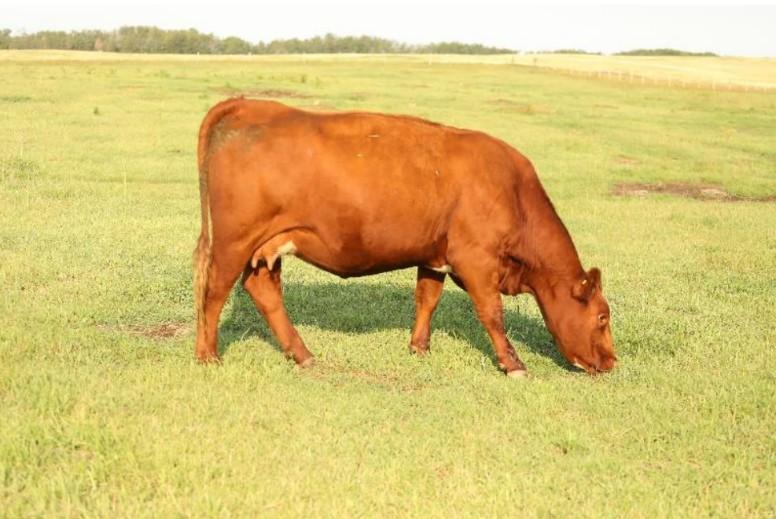
This scan should be done no more than 60 days (and preferably 35-50 days) before breeding or bull turn out dates.
Just because a heifer is born single doesn’t mean she will be reproductively sound. A single-born heifer can be a freemartin. The likely explanation is that the heifer had a bull calf sibling, in utero, that died and was reabsorbed so was never known.
Breed composition and predicted growth, maternal and feed efficiency traits were gathered through DNA. Generally, hybrid vigour is an indicator of longevity and efficiency. Increased hybrid vigour is known to improve weaning weights, disease susceptibility and hardiness of the offspring.

Results
The investigation of new technologies and processes for improving decision-making regarding reproductive selection and efficiency evaluations of beef heifers has uncovered numerous benefits and issues.
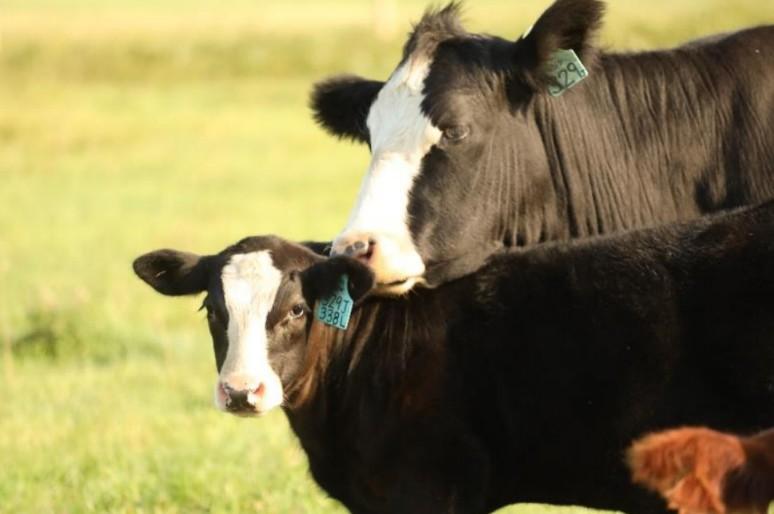
Key results include:
The research found strong correlations between those heifers who ended up open and their RTS being low. It is an excellent assessment to avoid turning reproductively unsound females out to valuable pasture resources for breeding.
Females with body condition scores >2.75, teat scores that were not too large, nor too small, on a nine-point scale, and those that shed more hair earlier in the spring/summer period tended to be the heifers that got pregnant early or in the first two cycles in both of their calvings.
Hip height was also significant with a negative correlation to these fertility measures. Heifers that were too tall were less fertile than the moderate framed ones for the breeding programs in the herds studied. Uterine horn diameter was significant and negatively correlated to our fertility and calving outcomes. However, it may be explained because those taller, larger framed heifers with more continental breed influence had proportionately larger reproductive tracts. This reinforces the notion of selecting for the more moderate breeding females and not for the extreme small or large heifers. Clearly, visual appraisal and specific conformation assessments of heifers are good measures to select replacement breeding heifers.

Based on remote sensing rumen bolus technology that Dr. Markus’ team implemented in this project (providing daily water intake frequency, internal temperature and activity indicators to alert for cycling (estrus)), the flightier heifers (based on a chute exit score) did not settle after processing and had elevated temperatures, reduced water and/or feed intake for a longer time period compared to the more docile heifers, resulting in poorer gains.
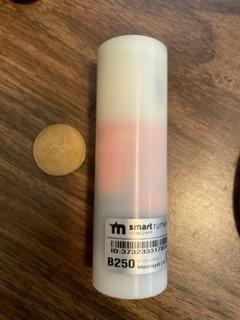
A breed influence was evident as these more fertile, early calving heifers tended to have more British breed influence and less Continental breed with approximately 65 per cent British/maternal and 35 per cent continental/terminal breed composition. This finding complicates the interpretation of the genomic results. Generally, research literature supports increased retained heterozygosity or more hybrid vigour, (reported as the per cent of gRH), as it may indicate females with improved fitness traits (feed efficiency and longevity). Conclusions from prior research have been made that more hybrid vigour >43 per cent results in females staying in the herd longer and thus producing more calves and income. To simplify this conclusion, we assume a 3-way cross is near ideal. However, our study shows that the ideal breed types in that 3-way cross, or those breeds contributing to that increased hybrid vigour, are not only location and management dependent, but most likely need to be in higher proportions (2/3) from the maternal breed types, and less (1/3) from the terminal breed types.

There is merit in the genomic tools with breed composition having value when sorting animals into mating groups for next year’s breeding season if ranchers wish to optimize hybrid vigour in the offspring. Such a tool allows for optimum bull breed selection to compliment crossbred heifers. Selecting heifers based only on coat colour is not accurate enough to optimize the hybrid vigour and fertility outcomes.
Return on investment calculations can show positive and worthwhile outcomes under certain scenarios when utilizing these various technologies, including reproductive tract scoring to sort females into breeding groups and genomic indexes for genetic assessment management. Obviously, assumptions specific to a ranch may influence the results and small herds may not see the benefits, but these technologies have promise for ranch adoption if more value can be demonstrated over longer periods of time.
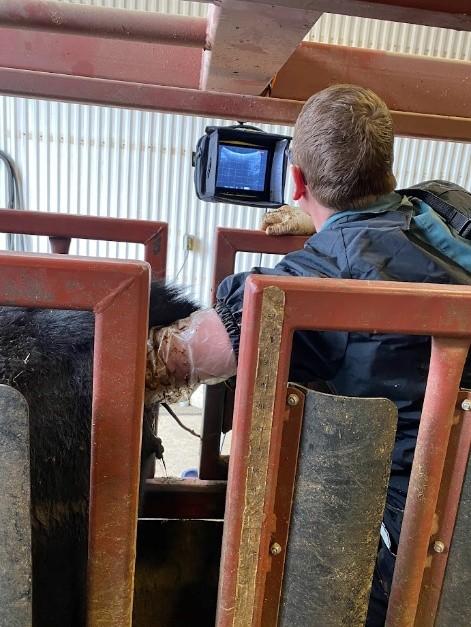
Tremendous industry and student training, work-integrated and learning opportunities have been realized in working with numerous ranchers, academia and technologies. Such arrangements have strengthened Lakeland College’s practicum placement component within the Bachelor of Agriculture Technology degree program. Industry partnerships and collaboration that were formed have been reinforced with on-going collaboration and new research funded by industry to continue this area of study.

Why it’s important
The financial risk of developing replacement heifers (currently ranging in cost from $2,500-$4,500/head) that don’t perform is reduced when they are evaluated beyond their external conformation and coat colour. Identifying sub-fertile and poorer genetic heifers early provides the opportunity to move them into a later breeding program to allow them to mature, or cull and market them at an optimal time and reduce the overall cost of the replacement heifer program on the ranch.
